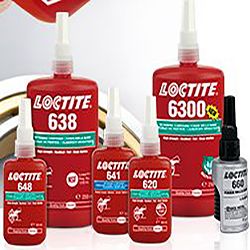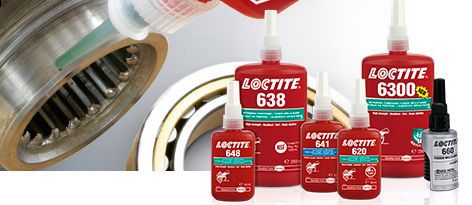
Retaining products have a high load-bearing capacity - with LOCTITE you can find the right product for cylindrical parts.
Our products
LOCTITE shrink fit products secure bearings, bushings and roller parts in housings or onto shafts. Eliminates friction corrosion by increasing maximum load transfer capacity and uniform stress distribution. These liquid-applied products allow 100% contact between rubbing metal surfaces, eliminating the need for more expensive designs, time-consuming machining or even mechanical methods.
Products
→ LOCTITE 648
→ LOCTITE 638
→ LOCTITE 638
→ LOCTITE 648
Advantages
Advantages of LOCTITE Retaining Products compared to conventional mounting methods
→ Higher strength with simpler and cheaper designs
→ Reducing dependency on machining tolerances
→ Prevention of corrosion and friction
→ Uniform load and stress distribution on the part
LOCTITE Retaining Components provide the following benefits when used with shrink fit products:
→ Higher load transfer and better performance with existing designs and geometry.
→ Equal performance with flexible tolerances.
→ Reductions in part size and weight.
Problems of Conventional Assembly Methods that Can Be Solved with LOCTITE Retaining Products
Pins, key/keyway assemblies have an uneven mass distribution and an imbalance that can cause vibration at high speeds.
Grooves and serrations cause high stresses and high machining costs due to the "notching effect" in a wedge area.
Clamp rings, press-fits, compression-fits, and taper-mounted parts rely solely on friction to transmit torque and are therefore constrained by material, surface, and design. Achieving specific load capacities requires close tolerances, resulting in high production costs. Clamping creates stresses that can cause component failure, especially when combined with operating voltages.
Welding and brazing: only suitable metals can be joined, parts may deform due to the required high temperatures. Heating the material can cause residual stresses and structural failure. In addition, disassembly can become difficult or even impossible.